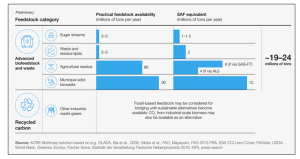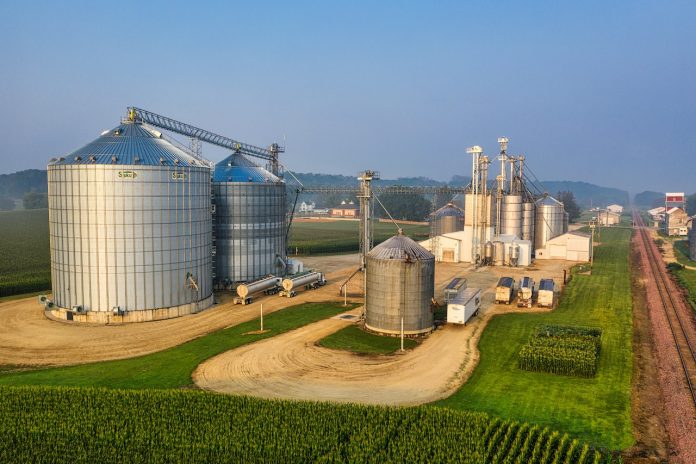Abstract
As we celebrate World Biofuel’s Day on 10th August 2024, we recognize bioenergy’s potential to drive social progress, economic development, and environmental stewardship. By adopting a comprehensive approach and addressing challenges, we can build a sustainable future. Let’s embrace bioenergy as a catalyst for societal empowerment, economic growth, and environmental conservation
Introduction
As the world faces a climate crisis, excessive fossil fuel use exacerbates the problem. Burning these fuels has led to a rise in greenhouse gases, particularly CO2, causing global temperature increases and erratic weather patterns. The transportation and power sectors, heavily reliant on petroleum and coal, are major contributors to this issue.
India, the third-largest oil importer and consumer, heavily depends on oil imports for power and transportation. In the fiscal year 2023-24, India imported 232.5 million metric tonnes (MMT) of crude oil, spending $132.4 billion. This dependency significantly impacts India’s greenhouse gas (GHG) emissions, which rose by 190 million tonnes in 2023, reaching 2.8 gigatonnes, mainly from burning imported oil.
This oil import dependency affects India’s economy and environment by increasing air pollution and climate change. As energy needs grow with development and urbanization, GHG emissions are likely to rise. To address this, India must explore sustainable energy sources like biofuels, renewable technologies, and improved energy efficiency to reduce oil dependency and mitigate environmental impact.
Biofuels
“Biofuels, as renewable and carbon-neutral energy sources, can reduce India’s fossil fuel dependency. They offer a climate-friendly solution by balancing the CO2 emitted during combustion with the amount absorbed by plants. Biofuels emit fewer pollutants, improving air quality and public health, and stimulate rural economies by creating jobs and supporting local industries.”
This article explores the challenges and impacts of climate change and how biofuels can mitigate its adverse effects. Investing in biofuels can reduce greenhouse gas emissions, promote economic growth, and support environmental conservation.
Bioethanol
Bioethanol is a high-octane biofuel made from fermenting biomass like corn, potatoes, damaged grains, sugar beet, sugar cane, and vegetable residues. It is a renewable energy source, chemically identical to ethanol, with a high Research Octane Number (RON) that enhances engine power and performance. Ethanol blends well with petrol and significantly reduces pollutants like Carbon Monoxide, Sulphur Oxides, Nitrogen Oxides, Hydrocarbons, and Particulate Matter compared to fossil fuels. Lifecycle analysis shows ethanol from agricultural feedstocks significantly lowers GHG emissions compared to conventional fossil fuels.
Ethanol Blended Petrol (EBP) program
The Government of India (GoI) has launched a scheme called EBP to encourage the use of domestically generated bioethanol as transportation fuel along with Gasoline (Motor Spirit or Petrol) in an effort to cut down on CO2 emissions and fossil fuel imports.
- During 2021-22, revenue of about INR 20,500 crore has been generated by sugar mills/distilleries from the sale of ethanol to OMCs which has enabled them to clear cane dues of farmers.
- Cumulative foreign exchange impact due to EBP Programme is estimated over 53,894 crores during 2014 to November 2022.
- Greenhouse gas emissions due to the EBP Programme were reduced by 2 lac tons during 2014 to November 20221which is equivalent to avoiding 12.49 million passenger cars4.
As per the Roadmap prepared by NITI Aayog which is based on the projected sale of Motor Spirit (MS), the estimated requirement of ethanol for blending with petrol is 988 crore litres for ESY 2024-25 and 1016 crore litres for ESY 2025-26.
Compressed Biogas (CBG)
Diesel-powered vehicles dominate India’s road freight, accounting for 71% of the country’s freight movement and 92% of transportation emissions, which are 12% of India’s energy-related CO2 emissions. Freight CO2 emissions are projected to rise by 451%, from 220 million tonnes in 2020 to 1,214 million tonnes by 2050.
CBG, a biofuel produced through the anaerobic digestion of organic feedstocks, is categorized into organized feedstocks (industrial byproducts like press mud and spent wash) and unorganized feedstocks (agricultural sources like rice straw, cotton stalks, and cow dung).
“Replacing diesel with CBG in road transport can reduce CO2 emissions and lower logistics costs, making it a compelling low-carbon fuel. Additionally, CBG can substitute conventional natural gas in industries for heating, cooling, and electricity generation.”
A typical 20 TPD CBG plant brings significant environmental and economic advantages:
- Reduced Emissions: Slashes greenhouse gas emissions by a remarkable 70%, saving an impressive 16,400 MT annually.
Delhi’s CNG policy signifies importance of the shift from the diesel to CNG. Delhi’s annual average PM 2.5 concentration in 2021–22 was improved to 100 μg/m³ compared to the pre-CNG-conversion era (130 μg/m³).

This signifies the GHG reduction potential of the CBG.
- Clean Transportation: Enables 300-420 trucks to operate daily on CBG, a cleaner-burning fuel source, potentially covering a massive 5.3 crore kilometres each year.
- Diesel Displacement: Effectively replaces up to 880 diesel trucks per year, promoting cleaner transportation solutions.
In essence, CBG offers a sustainable solution for both transportation and industrial sectors, promoting a cleaner and more cost-effective future.
Sustainable Aviation Fuel
In 2019, India’s civil aviation sector consumed about 8 million tons of Aviation Turbine Fuel (ATF), emitting roughly 20 million tons of GHGs. Globally, civil aviation uses around 250 million tons of fossil-based ATF, producing approximately 1 billion tons of GHG emissions, accounting for 2-3% of total emissions and 10-12% of transportation emissions. Research shows that additional non-CO2 pollutants from aircraft engines also impact climate change.
The International Civil Aviation Organisation (ICAO) has set a goal to achieve net-zero emissions by 2050. Sustainable Aviation Fuel (SAF) is seen as the key solution for decarbonizing aviation. The International Air Transport Association (IATA) estimates that SAF can reduce emissions by 65% to meet net-zero targets, requiring about 449 billion liters (350 million tons) per year. Policies and market drivers, like the Carbon Offsetting & Reduction Scheme for International Aviation (CORSIA), support SAF production and demand in the US and EU.
SAF is a renewable or waste-derived fuel similar in composition to ATF and meets ICAO’s sustainability criteria under CORSIA guidelines. Some SAF types, with low aromatic content, burn cleaner and emit less SOx and particulate matter than conventional ATF.
India is an agrarian country as it is blessed with agri-based feedstock, such as agricultural residues, cane molasses, cane syrup, and surplus/damaged grains. These can be utilized to produce biofuels like low carbon ethanol, sustainable aviation fuel. This will help in huge GHG reduction. For example, biofuels produced from such biomasssuch as bioethanol and SAF have lower carbon intensity (CI) values than their fossil fuel-based counterparts.

*ICAO document – CORSIA Default Life Cycle Emissions Values For CORSIA Eligible Fuels
With such amount of feedstock available, the India has potential to produce 19 to 24 million tons of SAF per year, according to the Clean Skies for Tomorrow India Insight Report 2021 by the World Economic Forum3.

Producing and using SAF in India will also yield significant social and economic benefits, including a positive impact of around USD 2.8 billion on GDP from producing and using 360,000 tons of SAF annually3. This would provide additional income to farmers, enhance energy security, create jobs in the rural economy, improve waste management, and result in cleaner skies with less open-air burning.
Socioeconomic and Environmental Benefits
Biofuels are a powerful sustainable energy source offering numerous benefits to various stakeholders. They enhance social well-being, promotes economic growth, provides renewable energy solutions for governments, and supports farmers’ livelihoods.
- Job Creation: The biofuels industry generates employment across agriculture, biomass production, processing, and distribution, particularly benefiting rural areas.
- Rural Development: Establishing biofuel production facilities in rural areas can stimulate local economies by attracting investments and supporting infrastructure development, such as roads and storage facilities.
- Sustainable Development: Biofuels align with the UN’s Sustainable Development Goals (SDGs), including affordable clean energy (SDG 7), sustainable cities (SDG 11), and good health (SDG 3).
- Waste Management: Biofuel production often uses agricultural residues and waste, helping farmers manage crop residues and reducing the need for burning, which can improve air quality and soil health.
- Income for Farmers: Farmers can diversify their income sources by growing energy crops specifically for biofuel production. This additional revenue stream can help stabilize their incomes and minimize dependency on traditional crops.
- Utilization of Marginal Lands: Biofuel crops can be grown on marginal lands that are not suitable for food crops, making productive use of otherwise underutilized areas and increasing overall land productivity.
- Reduced Emissions: Biofuels reduce carbon dioxide emissions and local pollution, leading to cleaner air in cities. India’s Ministry of Petroleum and Natural Gas (MoPNG) reported that the EBP program reduced greenhouse gas emissions by 318.2 million tonnes between 2014 and November 2022.
- Biodiversity: Cultivating energy crops can restore degraded lands, promote agroforestry, and create wildlife habitats, fostering biodiversity and ecological balance.
- Energy Security: Domestic biofuel production reduces dependency on imported fossil fuels, enhancing energy independence and mitigating supply risks and geopolitical vulnerabilities.
- Foreign Exchange Savings: The MoPNG estimated that the EBP program saved over INR 53,894 crores in foreign exchange from 2014 to November 2022 by reducing the need for costly foreign oil imports1.
Challenges and Path Forward
To realize the full potential of bioenergy, we must address key challenges. This includes focusing on non-food feedstocks, promoting waste-to-energy solutions, and protecting natural habitats. Collaboration between governments, industries, and institutes is crucial. Investing in research and supportive policies is essential, along with integrating social, economic, and environmental considerations into bioenergy planning.
Conclusion
As we celebrate World Biofuel Day, we recognize bioenergy’s potential to drive social progress, economic development, and environmental stewardship. By adopting a comprehensive approach and addressing challenges, we can build a sustainable future. Let’s embrace bioenergy as a catalyst for societal empowerment, economic growth, and environmental conservation. Happy World Biofuel Day!
References:
- https://mopng.gov.in/files/uploads/BPCL_Ethanol_Booklet_2023.pdf
- Sustainability | Free Full-Text | What Is Polluting Delhi’s Air? A Review from 1990 to 2022 (mdpi.com)
- https://www3.weforum.org/docs/WEF_Clean_Skies_for_Tomorrow_India_
- Report_2021.pdf
- https://theicct.org/sites/default/files/publications/India-PV-FC-workingpaper-FINAL.pdf

































